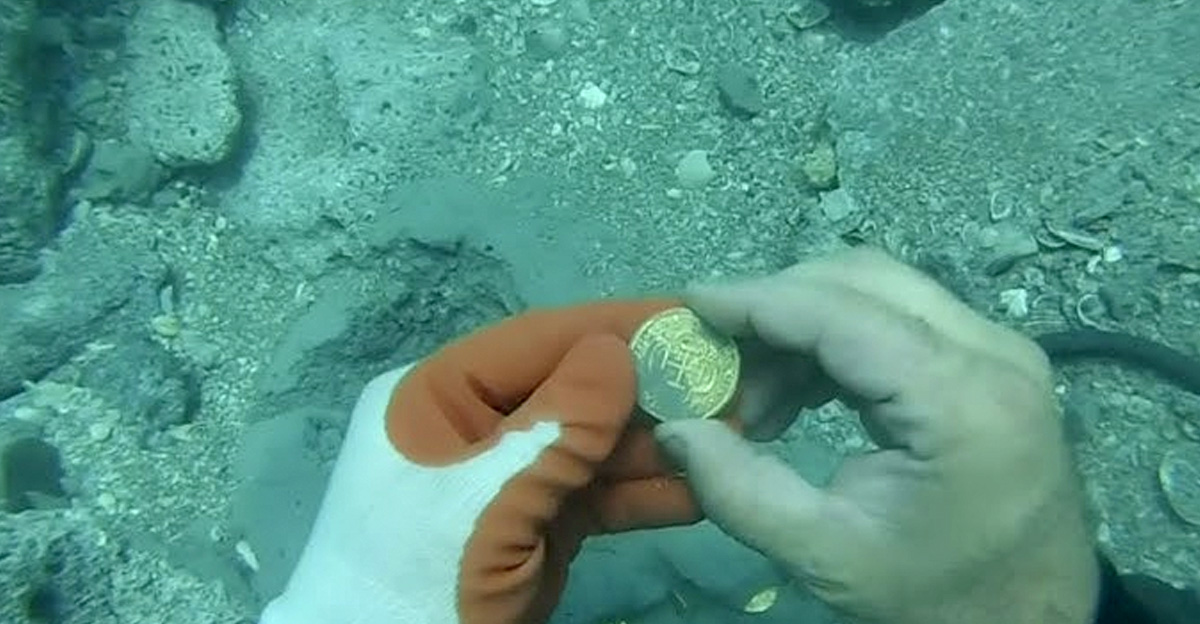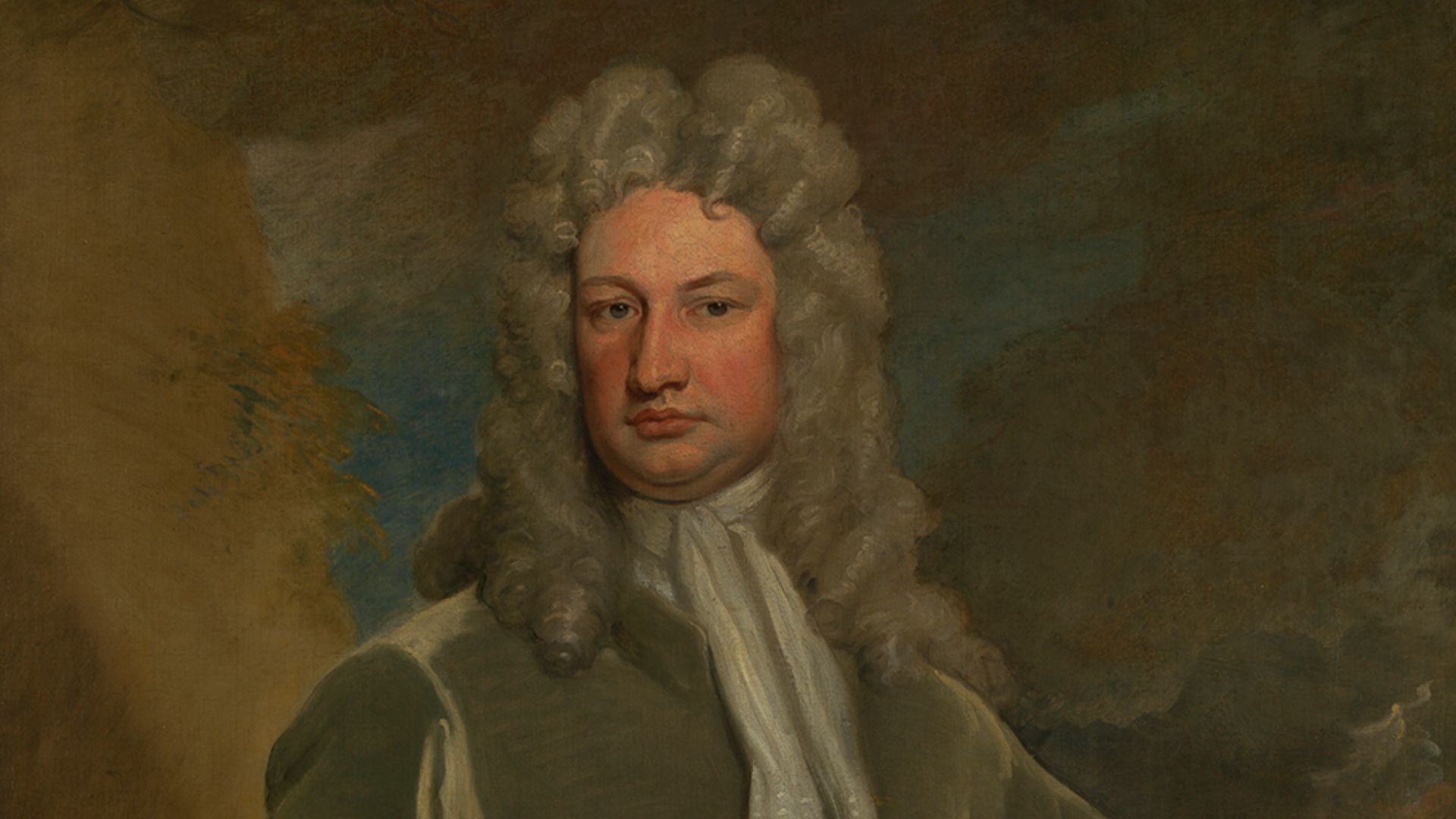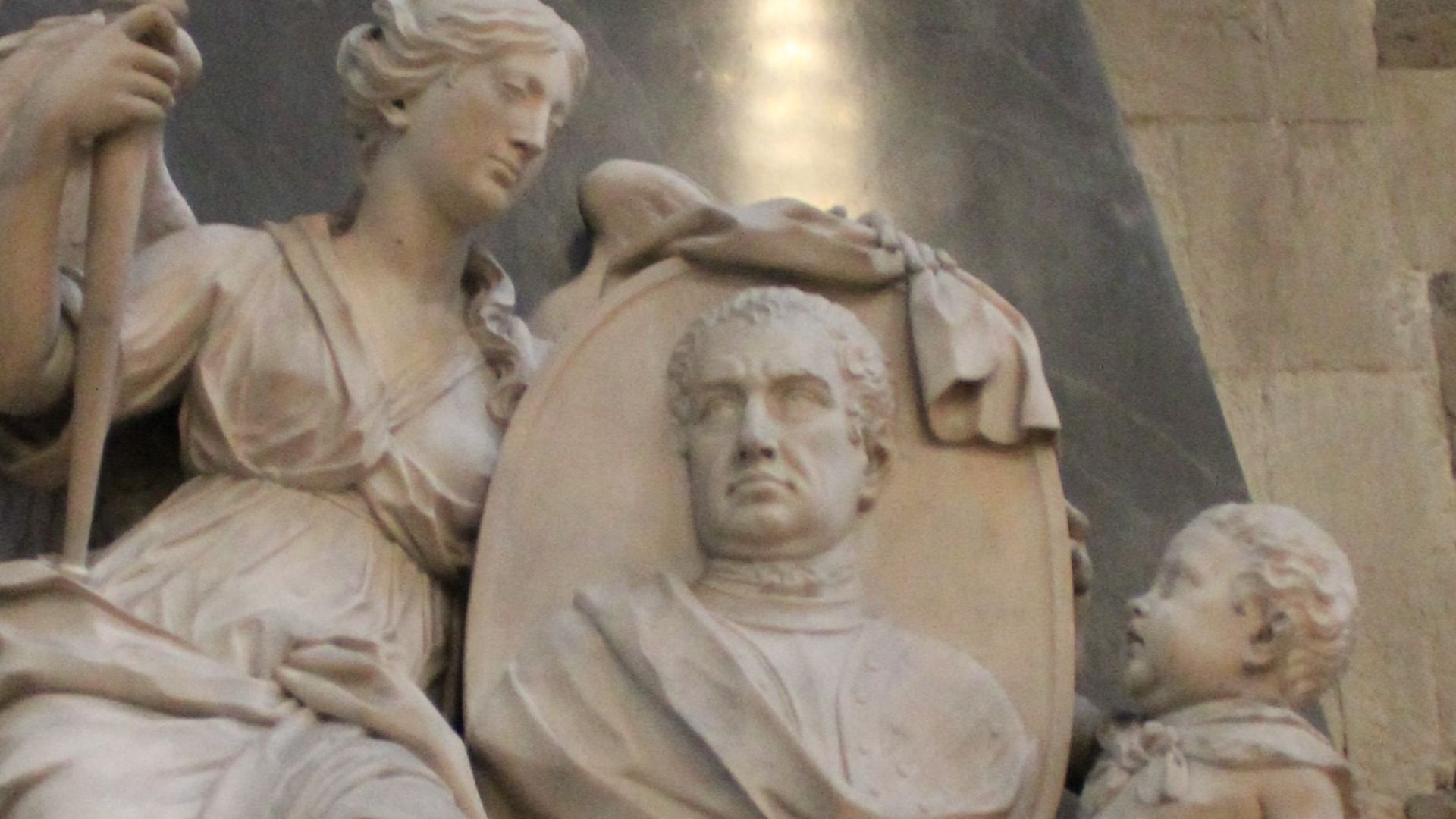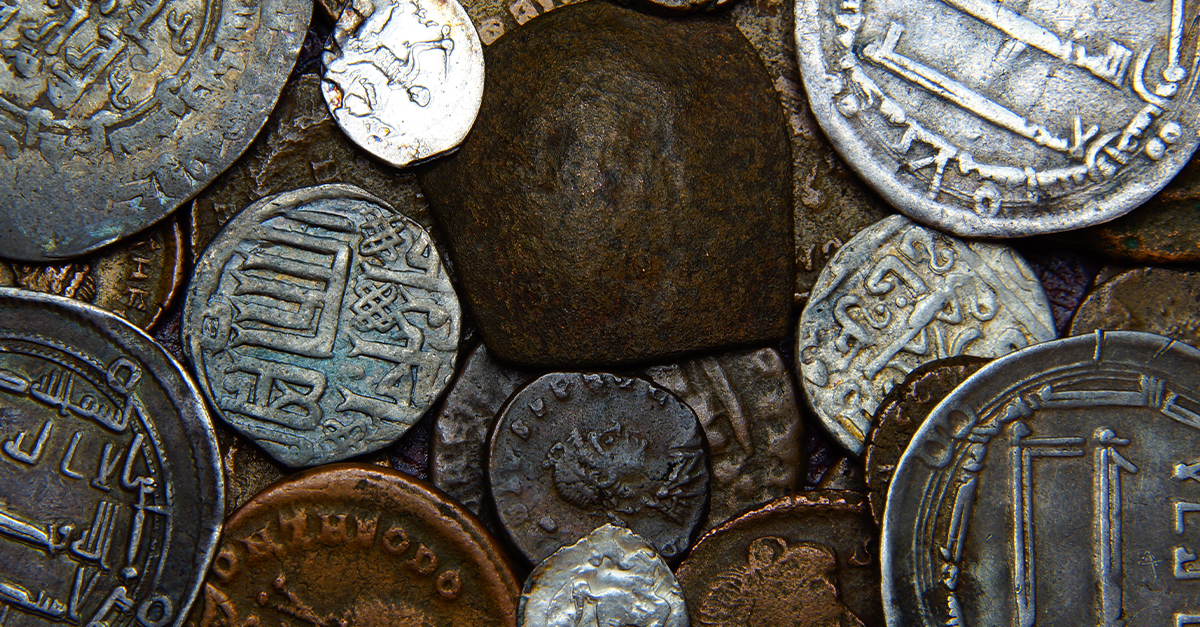Colonial Gold Rush
The San Jose vessel not only held cargo, but it also held a legend when it vanished beneath Caribbean waters three centuries ago. Now, scattered gold coins continue to tell its history and confirm its identity.

Spanish Empire
When Columbus stumbled upon the Americas in 1492, he unknowingly launched Spain into becoming Europe's greatest superpower. Within decades, Spanish conquistadors had carved out a massive empire stretching from Mexico to the southern tip of South America, controlling indigenous people and vast treasures.
 Sebastiano del Piombo, Wikimedia Commons
Sebastiano del Piombo, Wikimedia Commons
Colonial Exploitation
The Spanish didn't just conquer—they systematically stripped entire civilizations of their wealth. Priceless Aztec and Incan gold artifacts were melted down into uniform bars for shipping, while native populations faced forced labor in deadly mines. This brutal extraction system would eventually pump riches into Spanish coffers.
 Sunken Treasures (Full Episode) | Drain the Oceans by National Geographic
Sunken Treasures (Full Episode) | Drain the Oceans by National Geographic
Viceroyalty Peru
Among these territories, the Viceroyalty of Peru became the crown jewel of colonial wealth. Spanning modern Peru, Bolivia, Ecuador, and Colombia, this region housed dozens of productive gold mines. Such remote mountain operations supplied the raw materials that made Spanish galleons floating fortunes.
 MilenioscuroDerivative work:Janitoalevic, CC BY-SA 3.0, Wikimedia Commons
MilenioscuroDerivative work:Janitoalevic, CC BY-SA 3.0, Wikimedia Commons
Potosi Mines
High in the Bolivian mountains, the silver mines of Potosi became perhaps the most valuable single location on Earth. Many workers died by the thousands extracting silver that filled ships like the San Jose. This single mining complex produced more silver than anywhere else.
 Murray Foubister, CC BY-SA 2.0, Wikimedia Commons
Murray Foubister, CC BY-SA 2.0, Wikimedia Commons
Lima Mint
By 1683, Lima had turned into the beating heart of Spanish colonial currency production. The mint resumed full operations and began striking gold coins in 1696, creating the distinctive pieces. Each coin bore unique wave patterns that marked it as unmistakably Peruvian, a signature that still survives.
Treasure Fleets
Starting in 1566, Spain revolutionized global trade by developing the world's first systematic transatlantic convoy system. These weren't just ships carrying gold. They transported everything from Chinese porcelain to American tobacco, vanilla, and exotic woods. The fleets connected three continents in an economic web.
 William Elliot Griffis, Wikimedia Commons
William Elliot Griffis, Wikimedia Commons
Tierra Firme
Every August, the most important fleet of all departed Spanish ports: the Tierra Firme treasure fleet. This convoy held exclusive rights to collect South America's greatest treasures, sailing to bustling ports like Cartagena and Portobello. Unlike others, this one carried the crown jewels of colonial wealth.
 Sunken Treasures (Full Episode) | Drain the Oceans by National Geographic
Sunken Treasures (Full Episode) | Drain the Oceans by National Geographic
Trade Monopoly
Spain controlled every ounce of trade through an iron-fisted system centered in Seville. By law, no colonial goods could reach Europe through any other port, causing a bottleneck that made certain Spanish merchants incredibly rich. This monopoly also rendered the treasure fleets irresistible targets for pirates.
 David Roberts, CC0, Wikimedia Commons
David Roberts, CC0, Wikimedia Commons
Royal Treasury
Every treasure vessel carried cargo belonging to three groups: the Spanish Crown, private merchants, and colonial investors. The Crown claimed twenty percent of all precious metals through the "royal fifth" tax, ensuring that each successful voyage directly funded the country’s military campaigns.
 Sunken Treasures (Full Episode) | Drain the Oceans by National Geographic
Sunken Treasures (Full Episode) | Drain the Oceans by National Geographic
Atlantic Routes
These navigators perfected a circular route across the Atlantic, riding favorable winds and currents like a maritime highway. Ships departed Spain, stopped at the Canary Islands, then caught trade winds to the Caribbean. The return journey utilized the powerful Gulf Stream.
 Winslow Homer, Wikimedia Commons
Winslow Homer, Wikimedia Commons
Ship Construction
In 1697, Spanish shipwrights began constructing two identical sister ships in the Basque shipyard of Mapil, near Usurbil. The San Jose and San Joaquin were built simultaneously using traditional galleon design. Oak was used for the keel, pine for masts, and various hardwoods for hulls.
 Sunken Treasures (Full Episode) | Drain the Oceans by National Geographic
Sunken Treasures (Full Episode) | Drain the Oceans by National Geographic
Twin Vessels
Francisco Antonio Garrote designed both ships as mirror images, each stretching 150 feet long and bristling with 64 cannons across three gun decks. The San Jose carried 26 eighteen-pounders on her lower deck, 26 ten-pounders on the middle deck, and 12 six-pounders on her quarterdeck and forecastle.
 Inside the race to recover a sunken ship and up to $20B in treasure by TODAY
Inside the race to recover a sunken ship and up to $20B in treasure by TODAY
Fleet Assembly
By 1708, Spain desperately needed money to fund the ongoing War of Spanish Succession. Hence, the San Jose joined 16 other vessels forming that year's critical Tierra Firme fleet under General Jose Fernandez de Santillan, Count of Casa Alegre. This armada carried Spain's hopes for financial survival.
 Samuel Scott, CC BY-SA 3.0, Wikimedia Commons
Samuel Scott, CC BY-SA 3.0, Wikimedia Commons
Cargo Loading
At Portobello, Panama, stevedores loaded the San Jose with an estimated 7 to 11 million pesos worth of treasure. Gold bars, silver ingots, emeralds from Colombian mines, and thousands of freshly minted Lima coins filled her holds. San Joaquin carried an additional 5 million pesos.
 Sunken Treasures (Full Episode) | Drain the Oceans by National Geographic
Sunken Treasures (Full Episode) | Drain the Oceans by National Geographic
Departure From Portobello
Then, on May 28, 1708, the fleet finally departed Portobello after months of preparation. The convoy consisted of the three heavily armed galleons, plus 14 merchant vessels carrying additional cargo and supplies. General Santillan commanded from the San Jose's quarterdeck, knowing British warships were prowling Caribbean waters.
British Intelligence
British spies in this region had been tracking the ships’ movements for weeks, sending coded messages to Jamaica Station commander Charles Wager. The intelligence network knew exactly when these would sail and roughly how much wealth they carried. This wasn't a chance encounter but a carefully planned interception.
Wager's Squadron
Commodore Charles Wager commanded four British warships strategically positioned near Cartagena: HMS Expedition (70 guns), HMS Kingston (60 guns), HMS Portland (50 guns), and the fire ship HMS Vulture. His squadron had been resupplying at tiny Pequena Baru island, just 30 miles from the Spanish port.
 Godfrey Kneller, Wikimedia Commons
Godfrey Kneller, Wikimedia Commons
Naval Pursuit
Spanish lookouts spotted Wager's ships approaching around 3 PM on June 8, 1708, as the flotilla anchored near Baru Island. With very little wind, the heavily loaded galleons couldn't maneuver quickly. The British ships closed in, knowing the Spanish vessels' sluggish response would give them a tactical advantage.
Battle Formation
As evening approached, the armada arranged for combat with great precision. HMS Kingston targeted the San Joaquin while HMS Expedition moved directly toward the flagship San Jose. The Spanish galleons formed a defensive line, their bronze cannons, cast with dolphin engravings, ready to reveal devastating broadsides.
Powder Explosion
Around 7 PM, after ninety minutes of fierce cannon fire, catastrophe struck the San Jose. British shells ignited the ship's powder magazine in an explosion that witnesses described as resembling a volcanic eruption. The powerful blast sent burning debris onto the nearby HMS Expedition.
Shipwreck Lost
The San Jose vanished under the Caribbean waters in minutes, taking 589 of its 600 crew members to their graves along with Spain's desperately needed valuables. Only eleven survivors clung to debris as the "Holy Grail of Shipwrecks" settled 2,000 feet below the surface.
Treasure Legends
Stories of the lost galleon spread across the Caribbean like wildfire, inspiring countless treasure hunters and fortune seekers. Local fishermen reported strange objects washing ashore near Cartagena, while pirates and adventurers scoured the coastline for clues. The legend grew with each telling—a ghost ship filled with unimaginable riches.
Search Attempts
Professional treasure hunters began systematic searches in the 1970s, using increasingly sophisticated technology to scan the ocean floor. Magnetometers detected metal anomalies, side-scan sonar mapped underwater terrain, and submersibles explored promising sites. Each expedition cost millions of dollars, yet the San Jose remained stubbornly hidden.
False Claims
In 1981, the American company Sea Search Armada claimed to have located the wreck, sparking decades of legal battles with Colombia. The company insisted they had found the galleon at specific coordinates and demanded a 65–35 percent split of any recovered treasure. However, Colombian authorities disputed the location.
Legal Battles
Colombia's parliament passed laws declaring all shipwreck treasure as state property, offering only a five percent finder's fee, subject to 45 percent taxation. Sea Search Armada was sued in Colombian courts in 1989 and subsequently in US courts, but lost both cases. The legal warfare simply continued.
Colombian Discovery
It was on November 27, 2015, that the Colombian Navy finally spotted what appeared to be the authentic San Jose wreck using advanced underwater robotics. President Juan Manuel Santos announced the discovery on December 5, but kept the exact coordinates classified as a state secret.
 Chatham House, CC BY 2.0, Wikimedia Commons
Chatham House, CC BY 2.0, Wikimedia Commons
REMUS Technology
These naval teams deployed a REMUS 6000 autonomous underwater vehicle, one of the world's most advanced deep-sea exploration robots. The $3 million machine could operate at depths up to 6,000 meters, far deeper than human divers could safely reach. AUV sensors and cameras were used.
 Lost treasure found in the San Jose galleon in Colombia by On Demand News
Lost treasure found in the San Jose galleon in Colombia by On Demand News
ROV Operations
Similarly, remote-operated vehicles became the primary tools for exploring the fragile wreck without disturbing its archaeological integrity. These robotic systems transmitted high-definition video feeds to surface vessels, allowing researchers to examine artifacts in real-time. ROV manipulator arms could position cameras for detailed photography.
 Inside the race to recover a sunken ship and up to $20B in treasure by TODAY
Inside the race to recover a sunken ship and up to $20B in treasure by TODAY
Bronze Cannons
Well, the breakthrough identification came from distinctive bronze cannons bearing dolphin engravings. These were unique artistic features that matched historical records of San Jose's armament. The ornate weapons, cast in Spanish foundries around 1665, provided the first concrete evidence linking the wreck to the legendary galleon.
Site Protection
Colombia immediately declared the site a protected archaeological zone, establishing a security perimeter to prevent unauthorized salvage operations. Naval patrols monitor the area continuously, while the exact coordinates remain classified to deter treasure hunters. International maritime law supports Colombia's claim to protect cultural heritage.
 Inside the race to recover a sunken ship and up to $20B in treasure by TODAY
Inside the race to recover a sunken ship and up to $20B in treasure by TODAY
Non-Invasive Survey
The Colombian Institute of Anthropology and History mandated that all research must proceed without removing or disturbing any artifacts. This "look but don't touch" approach protected the wreck's archaeological context while still allowing comprehensive documentation. Scientists developed new techniques to gather maximum information through observation alone.
Archaeological Team
Lead researcher Daniela Vargas Ariza from Colombia's Naval Cadet School assembled an international team of maritime archaeologists, historians, and technology specialists. Team members included experts from the Colombian Institute of Anthropology and History, naval personnel, and academic researchers from multiple institutions.
Coin Discovery
Among the scattered debris, those involved identified clusters of gold coins that had spilled from the San Jose's treasure holds during the catastrophic explosion. These hand-struck "cobs" lay partially buried in sediment, their irregular shapes and crude craftsmanship typical of colonial Spanish currency.
 Inside the race to recover a sunken ship and up to $20B in treasure by TODAY
Inside the race to recover a sunken ship and up to $20B in treasure by TODAY
Lima Markings
A detailed analysis of the coin photographs revealed critical mint marks indicating production at Lima, Peru, in 1707. The letter "L" clearly marked Lima as the minting location, while wave patterns on the reverse side served as the Lima Mint's hallmark.
 Augi Garcia, CC BY-SA 3.0, Wikimedia Commons
Augi Garcia, CC BY-SA 3.0, Wikimedia Commons
Dating Evidence
The coins bore the date "707," representing the year 1707 in Spanish colonial notation. This dating proved that the ship couldn't have sunk before that year, since the coins couldn't have been loaded earlier. After all, historical records confirmed that the San Jose departed Peru in 1707.
 Lost treasure found in the San Jose galleon in Colombia by On Demand News
Lost treasure found in the San Jose galleon in Colombia by On Demand News
Assayer Marks
The letter "H" stamped on several coins identified Francisco de Hurtado as the chief assayer responsible for testing metal purity at the Lima Mint that year. One coin displayed a pellet mark next to the number "8," a sign of Hurtado's work that year.
 Lost treasure found in the San Jose galleon in Colombia by On Demand News
Lost treasure found in the San Jose galleon in Colombia by On Demand News
Plus Ultra
Between the Pillars of Hercules on the coin reverses, these folks also identified the Latin motto "P.V.A.," representing "Plus Ultra"—meaning “Further Beyond”. This phrase symbolized Spain's imperial ambitions to expand beyond the traditional limits of the known world. The motto appeared on Spanish currency.
Castile Symbols
Additionally, the coin obverses displayed intricate Jerusalem crosses enclosing quartered shields featuring castles and lions. These were the heraldic symbols of the united crowns of Castile and Leon. Such royal emblems confirmed the coins' Spanish origin and their connection to the monarchy's official currency system.
Design Analysis
Each coin measured approximately 32.5 millimeters in diameter and weighed around 27 grams, matching specifications for eight-escudo pieces. At that time, these were the highest-denomination gold coins. The "8" clearly marked their value, while the crowned Pillars of Hercules above the ocean waves formed the reverse layout.
 Inside the race to recover a sunken ship and up to $20B in treasure by TODAY
Inside the race to recover a sunken ship and up to $20B in treasure by TODAY
Chinese Porcelain Evidence
Archaeological surveys also identified Chinese porcelain fragments from the Kangxi period (1662–1722) scattered among the wreck debris. These ceramic pieces provided additional chronological proof supporting the early 18th-century timeframe. The presence of Asian luxury goods demonstrates the global trade networks that connected Spanish America with Chinese markets.
 Inside the race to recover a sunken ship and up to $20B in treasure by TODAY
Inside the race to recover a sunken ship and up to $20B in treasure by TODAY
Cargo Inventory Records
Historical documents show that the San Jose carried treasure "extracted from Spain's South American colonies," specifically intended to fund the War of Spanish Succession. Contemporary sources valued the cargo at different amounts, with estimates ranging from 10 to 11 million Spanish pesos.
Debris Field Analysis
Apparently, the eruption scattered artifacts across a wide debris field on the Caribbean seafloor, with coins concentrated in the stern section where treasure holds were located. Shifting seafloor conditions make precise artifact counting difficult, but high-resolution imagery reveals the violent nature of the ship's destruction.
Identity Confirmed
The convergence of evidence—1707 dating, Lima mint marks, Francisco de Hurtado's assayer signature, and historical records of the San Jose's final voyage, all together created an overwhelming case for positive identification. Research published in June 2025 concluded that this wreck represents the famous galleon.
 Sunken Treasures (Full Episode) | Drain the Oceans by National Geographic
Sunken Treasures (Full Episode) | Drain the Oceans by National Geographic
Scientific Publication
Daniela Vargas Ariza and her research team published their findings in the archaeological journal Antiquity, presenting the coin evidence to the global scientific community. The peer-reviewed study, titled "The cobs in the archaeological context of the San Jose Galleon shipwreck," established new standards for using numismatics.
 Inside the race to recover a sunken ship and up to $20B in treasure by TODAY
Inside the race to recover a sunken ship and up to $20B in treasure by TODAY
























